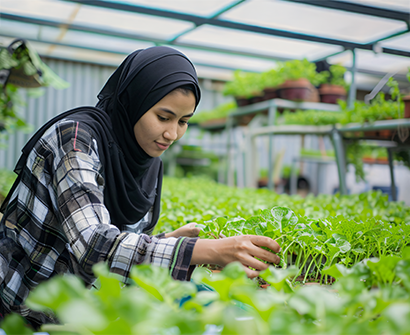Overview
Agriculture is at the frontline of climate vulnerability. With rising temperatures, shifting rainfall patterns, and an increase in extreme weather events, the global agricultural sector is being forced to adapt rapidly. These changes threaten food security, rural livelihoods, and the sustainability of agricultural ecosystems. As the climate crisis deepens, strategic adaptation is no longer optional—it’s essential.
Key Adaptation Strategies
1. Climate-Resilient Crops – Investing in the development and use of drought-tolerant, flood-resistant, and heat-tolerant crop varieties can help ensure stable yields. These crops are designed to thrive in harsher conditions, reducing the risk of crop failure.
2. Improved Water Management – Efficient irrigation systems, such as drip or sprinkler irrigation, combined with water harvesting techniques, can optimise water use. This is critical in areas facing water scarcity due to unpredictable rainfall and extended dry seasons.
3. Agroecological Practices – Techniques like crop rotation, intercropping, and conservation tillage enhance soil health and biodiversity, helping farms withstand climate shocks. Agroforestry, integrating trees with crops, also plays a role in carbon sequestration and microclimate regulation.
4. Digital & Climate Information Services – Providing farmers with access to real-time weather data, early warning systems, and mobile advisory services can support timely decision-making, reducing vulnerability to climate risks.
Conclusion
Adapting agriculture to climate change requires a multi-layered approach—blending innovation with traditional knowledge and policy support. Governments, agribusinesses, and farmers must collaborate to build resilient food systems that not only survive but thrive in a changing climate. With the right strategies in place, agriculture can evolve into a pillar of climate resilience and sustainability.

